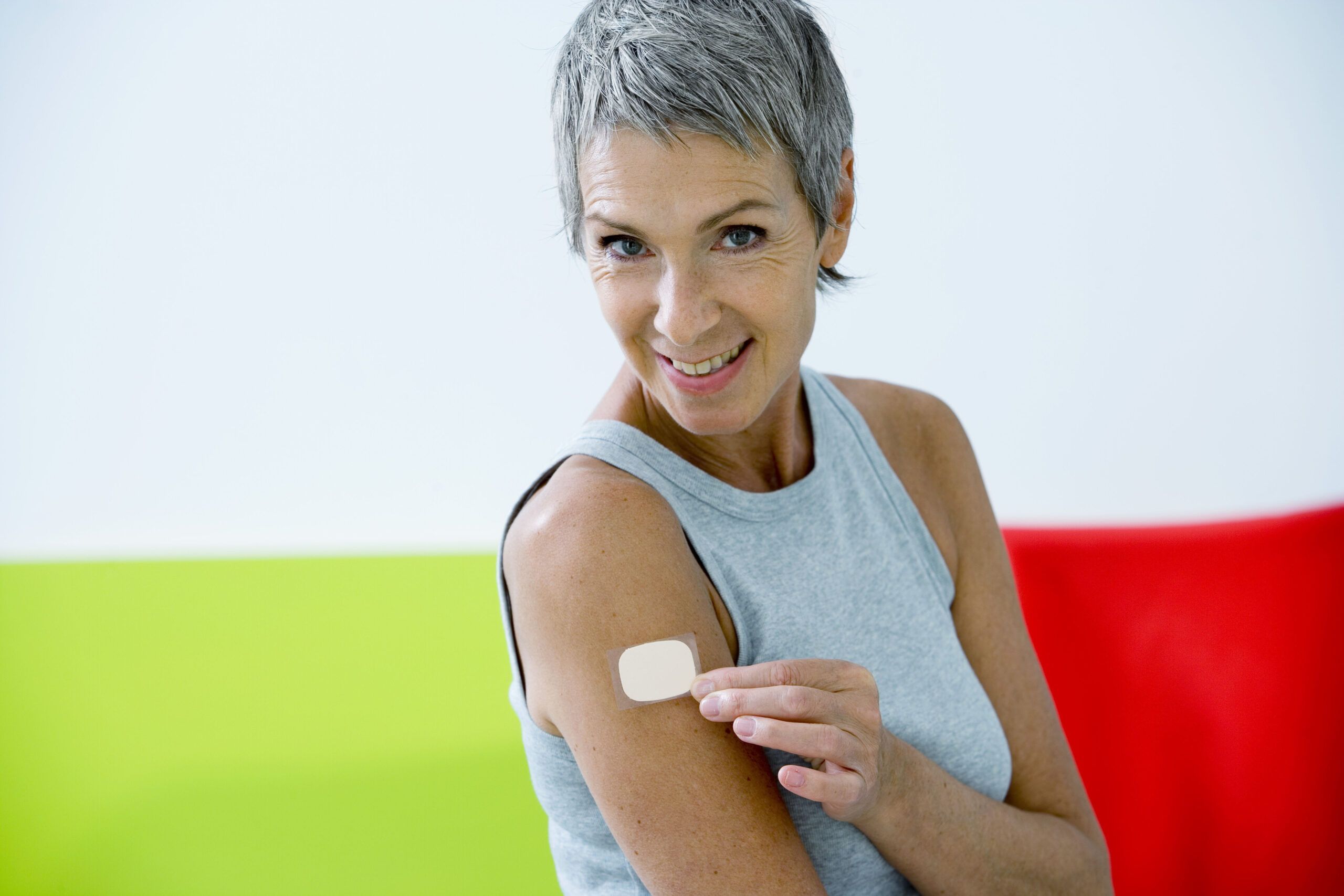Monitoring HRT with a Dried Urine Hormone Test
Jaclyn Smeaton, ND
Monitoring HRT with a Dried Urine Hormone Test
by Jaclyn Smeaton, ND
A common use of the DUTCH Test is to evaluate and monitor patients on hormone replacement therapy (HRT). HRT most commonly consists of estrogen, progesterone, or testosterone, and can come in a variety of forms—some that are FDA-approved prescriptions and others that are custom compounded.
Monitoring HRT Gives Patients and Providers an Advantage
The North American Menopause Society (NAMS) currently does not recommend routine monitoring of menopausal women on HRT, but many practitioners choose to do so. There are many advantages to this.
First, in an initial evaluation of a female patient, DUTCH testing can assist a practitioner in understanding estrogen detoxification pathways. For example, is estrogen being pushed into carcinogenic 4-OH estrogen catechols increasing the risk for breast cancer? Or is estrogen being pushed into proliferative 16-OH-E1 metabolites that can contribute to heavy bleeding, breast tenderness, and fibroid growth? Knowing this in advance may help you identify patients at higher risk for undesirable effects of HRT, or help you craft a more comprehensive treatment plan to avoid those risks and ensure optimal detoxification and eliminate exogenous hormones.
Second, once a patient is on therapy, monitoring can ensure that your patient is in an optimal therapeutic range to maximize their outcomes. Published urine trends on therapy correlate well with published serum levels on the same therapy, also aligning with reported clinical outcomes when these transdermal estrogen products are utilized. Most often, providers aim to reach estrogen levels between the postmenopausal range and the luteal range.
HRT Therapies Can be Monitored with Hormone Testing
When it comes to the use of the DUTCH Test to evaluate and monitor patients on hormone replacement therapy, you must take into consideration the type of hormone as well as the route of administration of the hormone (oral, topical, etc). If you are interested in using DUTCH for monitoring, the following provides you with some good options that would be most suitable for evaluation and monitoring with DUTCH.

Dried Urine Testing and Estrogen Replacement Therapy (ERT)
Topically applied forms of estrogen, including patches, gels, and creams, are well-suited for monitoring with DUTCH testing. With topical routes of administration (ROA), measuring urine metabolites can help to average out the daily up and down patterns that are seen in serum with the application of creams and gels. The aggregate clinical data suggests that a serum E2 level of about 20-40 pg/mL improves clinical outcomes of vasomotor symptoms and bone mineral density. This correlates with an approximate DUTCH dried urine value of about 0.7-1.8 ng/mg.
If estrogen is supplemented orally within 72 hours of urine sample collection, urine estrogen metabolites are expected to be elevated due to the first-pass effect in the gut and liver. Subsequently, urine results will not correlate with serum results when this route of administration is used. The best use for DUTCH with patients taking oral E2 therapy may be for patients to withhold treatment for one to two days and to monitor relative metabolite patterns. Estrogen adequacy should be evaluated using serum testing if needed.
Monitoring Progesterone Therapy with Dried Urine Testing
It is well known that ERT that is not used in combination with progesterone increases the risk of endometrial hyperplasia and cancer. Thus, progesterone is often used in menopausal hormone therapy (MHT) to protect the endometrium.
How is progesterone therapy best monitored? The short answer is that there is no lab testing that can be used to guarantee endometrial protection for patients on oral, vaginal, or transdermal progesterone therapy. Studies that have assessed the progesterone dosing and ROA required to protect the endometrium when concomitant ERT is being supplemented use endometrial biopsies to identify and categorize endometrial hyperplasia. As it is not practical to perform endometrial biopsies on patients to monitor progesterone therapy, dosing and ROA are based on these studies, which have found that 100-200 mg of oral or 45-90 mg of vaginal progesterone nightly consistently protects the endometrium. Studies are mixed with respect to transdermal progesterone, and it cannot be trusted to protect the endometrium without endometrial surveillance.
Why can’t laboratory testing be used to monitor progesterone therapy and guarantee endometrial protection? Measuring oral progesterone is difficult because serum progesterone levels rapidly rise and fall within a few hours after dosing, and some of the clinical effects may be coming from progesterone-like metabolites. Vaginal progesterone inserted into the upper third of the vaginal vault concentrates in the uterus, and serum levels do not reflect this concentration. Urine progesterone metabolites do not correlate with serum progesterone when using oral progesterone because urine includes predominantly metabolites created during progesterone’s first pass through the gut and liver. Urine and serum levels may correlate more strongly with vaginal or transdermal progesterone, but this has not been proven with research. As with serum testing, DUTCH is not useful in monitoring endometrial progesterone adequacy with oral or vaginal progesterone. However, it can be assumed to reflect systemic (including endometrial) adequacy for individuals not on progesterone therapy. See below for how DUTCH can be leveraged in these specific progesterone therapy situations.
Assessing Testosterone Therapy
When it comes to testosterone replacement therapy (TRT), serum provides the best measurement. There are valuable benefits to adding DUTCH testing to your patients’ androgen assessment, however. These include:
- Evaluating androgen metabolism pathways: the alpha androgen metabolites (5a-DHT, 5a-androstanediol, and androsterone) best reflect androgen activity at the tissue level, whereas the beta androgen metabolites (5b-androstanediol and etiocholanolone) have little to no androgen activity. For example, is testosterone preferentially metabolized down the more androgenic alpha pathway which could contribute to symptoms of high androgens such as hair loss and irritability? Or is testosterone preferentially metabolized down the less androgenic beta pathway which could contribute to symptoms of low androgens such as fatigue, low mood, and difficulty losing weight?
- Monitoring transdermal, intramuscular injection, and pellet testosterone therapy, as urine generally correlates with serum. Injections and pellets increase urine testosterone levels, as expected, but the increase may exceed what is seen in serum testing.
- Evaluating androgen aromatization into estrogens and downstream estrogen metabolism patterns.
NOTE: Due to the possibility of the UGT deletion (that causes urine testosterone, 5a-DHT, and 5b-androstanediol to be falsely low), consider monitoring TRT in the serum and using urine (DUTCH Test) adjunctively.

Serum Vs. Saliva Vs. Dried Urine Hormone Monitoring
DUTCH clinical educators are asked frequently why urine may be advantageous to use compared to saliva testing for hormone therapy. Prominent thought leaders teach many providers that salivary monitoring is preferred or is the “only” way to test and monitor hormone therapies. We take science seriously at DUTCH, and don’t find that there is literature to support that claim, other than with cortisol.
With cortisol, saliva is the gold standard for monitoring, but for HRT, we recommend that saliva be avoided for testosterone, estrogen, and progesterone via all ROA.
Mark Newman (DUTCH founder) created an extensive video series covering this topic and reviewing all available literature. If you are interested in diving further into the comparison of literature on saliva, serum, and urine monitoring of hormones, check out this video series .
For more information on HRT monitoring, consider reviewing the HRT Testing Matrix to compare different lab methods. Because of the importance of this topic, additional resources will be made available in the future on many of the important details regarding the administration and monitoring of HRT.
TAGS
Women's Health
Postmenopausal Women
Menopause
Hormone Replacement Therapy (HRT)
Functional Laboratory Testing: General
Laboratory Testing: In-Depth Look at DUTCH Urine Testing